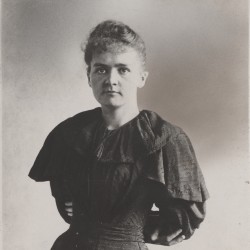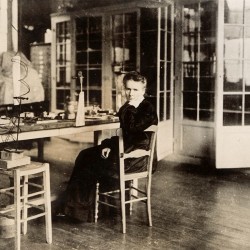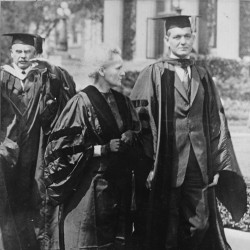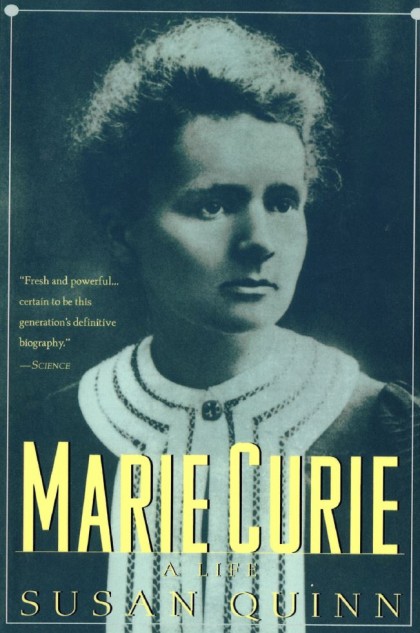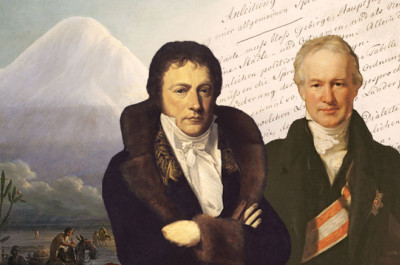
Marie Curie 1867-1934
Life and scientific career of Marie Curie
Marie Curie devoted her entire life to science and was a pioneer in her field. After having discovered two new radioactive elements with Pierre Curie in 1898, she became the first woman to occupy the position of professor at the Faculté des Sciences de Paris in 1908. She was twice awarded a Nobel Prize (in 1903 and 1911), and was a member of the Physics Solvay Council from 1911 to 1933. She was also the first woman to become a member of the Académie de médecine in 1922.
This virtual exhibition has been put together by the Musée Curie, and covers Marie Curie’s life and scientific career, spanning a long period of history that stretches from the end of the 19th Century through to the beginning of the 20th Century.
Contents
Bibliography
Please find below a selection of books on Marie Curie's life and scientific career.
Madame Curie, A Biography by Eve Curie, Da Capo Press, 2001
“Marie Skłodowska Curie (1867-1934) was the first woman scientist to win worldwide acclaim and was, indeed, one of the great scientists of the twentieth century. Written by Curie’s daughter, the renowned international activist Eve Curie, this biography chronicles Curie’s legendary achievements in science, including her pioneering efforts in the study of radioactivity and her two Nobel Prizes in Physics and in Chemistry. It also spotlights her remarkable life, from her childhood in Poland, to her storybook Parisian marriage to fellow scientist Pierre Curie, to her tragic death from the very radium that brought her fame. Now updated with an eloquent, rousing introduction by beast-selling author Natalie Angier, this timeless biography celebrates an astonishing mind and an extraordinary woman’s life.”
Ève Curie
Pierre Curie, with autobiographical notes by Marie Curie, by Marie Curie, Dover Publications, Inc., 2012
Marie Curie, A Life, by Susan Quinn, Da Capo Press, 1995
“One hundred years ago, Marie Curie discovered radioactivity, for which she won the Nobel Prize in physics. In 1911 she won an unprecedented second Nobel Prize, this time in chemistry, for isolating new radioactive elements. Despite these achievements, or perhaps because of her fame, she has remained a saintly, unapproachable genius. From family documents and a private journal only recently made available, Susan Quinn at last tells the full human story. From the stubborn sixteen-year-old studying science at night while working as a governess, to her romance and scientific partnership with Pierre Curie – an extraordinary marriage of equals- we fell her defeats as well as her successes: her rejection by the French Academy, her unbearable grief at Pierre’s untimely and gruesome death, and her retreat into a love affair with a married fellow scientist, causing a scandal which almost cost her the second Nobel Prize. In Susan Quinn’s fully dimensional portrait, we come at last to know this complicated, passionate, brilliant woman.”
About
This virtual exhibition has been created as a natural prolongation of the travelling exhibition "Marie Curie 1867-1934". Arranged by the Musée Curie in 2011 for the International Year of Chemistry, the exhibition serves to commemorate the centenary year of Marie Curie’s Nobel Prize in Chemistry.
Translated in several languages, the exhibition has travelled continuously throughout the world. For further details on how to book the exhibition, click here.
Credits
The exhibition has been arranged by the Musée Curie, with support from the Foreign and European Affairs Ministry, the Association Curie Joliot-Curie, the Institut français, the Institut Curie and the National Center for Scientific Research CNRS.
All images are provided by the Musée Curie’s archives.
Arrangement of the Virtual Exhibition
Xavier Reverdy-Théveniaud
With help from
Annael Le Poullennec and the team at the PSL Resource and Knowledge department


